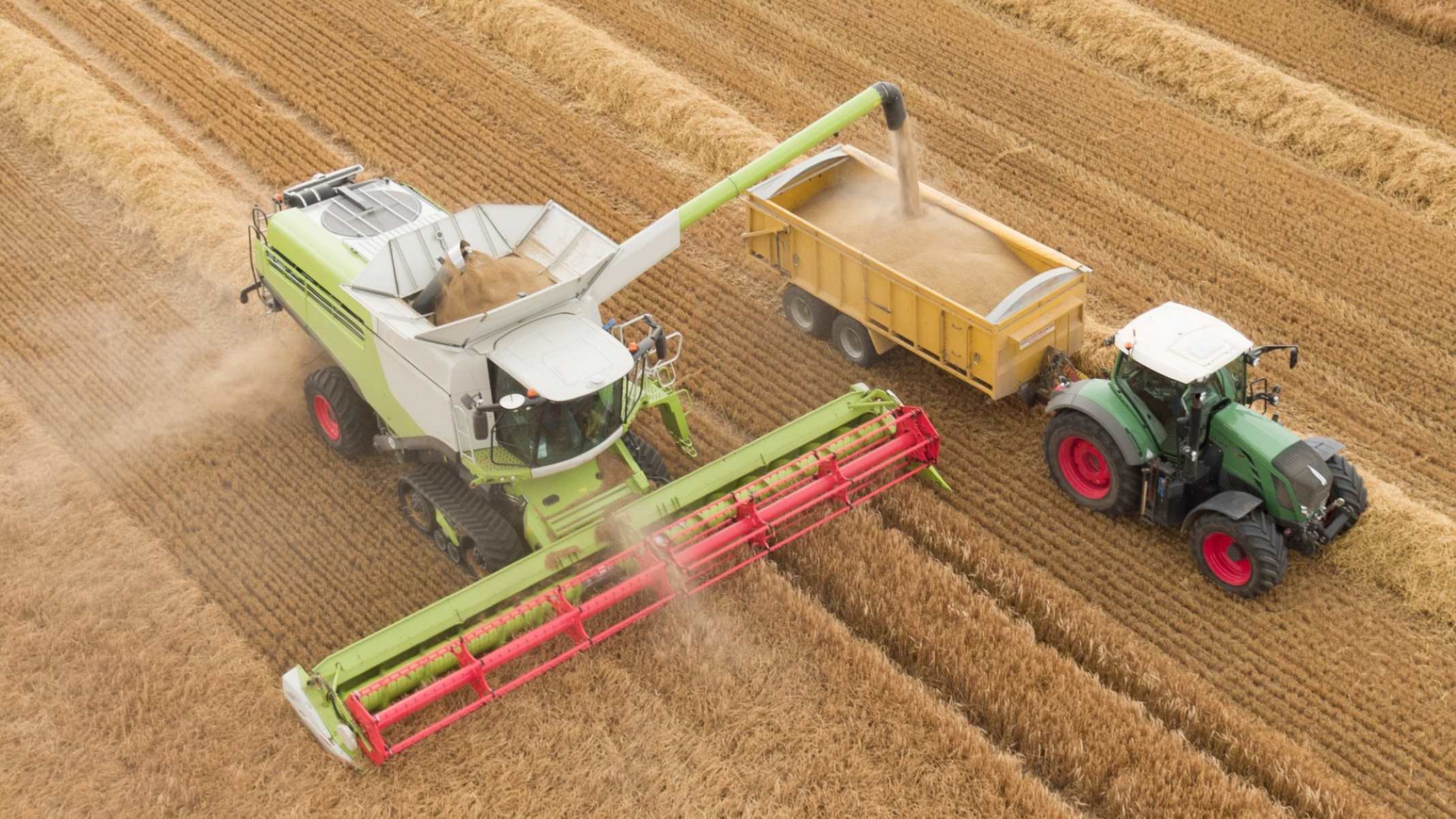
Harvest season is a time of abundance and celebration, as farmers around the world reap the rewards of their hard work and watch their fields transform into bountiful landscapes. It is a time when crops are gathered, fruits are picked, and the earth is showered with the colors and aromas of nature’s bounty. The rich history and cultural significance of the harvest season make it a fascinating subject to explore. In this article, we will delve into 18 intriguing facts about the harvest, shedding light on the traditions, practices, and unique experiences associated with this time of year. So, let’s grab our virtual baskets and embark on a journey through the fascinating world of harvest!
Key Takeaways:
- Harvest festivals are celebrated worldwide, bringing people together to give thanks and celebrate the abundance of the season with feasting, music, and traditional ceremonies.
- The harvest season is a time of abundance and gratitude, where farmers and communities come together to cherish the rewards of nature’s bounty.
The Harvest Moon is a phenomenon that occurs in autumn.
The Harvest Moon refers to the full moon that is closest to the autumnal equinox. It typically appears in September or October and is characterized by its bright orange color and low, glowing appearance on the horizon.
Harvest festivals are celebrated worldwide.
Harvest festivals are joyous events that take place in various cultures around the world. They are a way to give thanks for a bountiful harvest and to celebrate the abundance of the season. From the Oktoberfest in Germany to Thanksgiving in the United States, these festivals often involve feasting, music, dancing, and traditional ceremonies.
Corn is one of the most harvested crops globally.
Corn, also known as maize, is an essential crop that is extensively grown and harvested across the globe. It is used as not only a staple food but also for various other purposes such as animal feed, biofuel production, and even industrial applications.
Apples are traditionally associated with harvest season.
Apples have long been a symbol of the harvest season. They are commonly harvested in the fall and are used for baking, cider-making, and eating fresh. The tradition of apple-picking is a popular activity during this time, with orchards offering the opportunity for families to gather their own apples.
The combine harvester revolutionized the harvesting process.
The invention of the combine harvester in the 19th century revolutionized the way crops are harvested. This machine combines the tasks of reaping, threshing, and winnowing, making the process much more efficient and less labor-intensive.
Pumpkins are commonly harvested for Halloween.
Pumpkins have become synonymous with Halloween, and they are often harvested during the fall season for carving into jack-o’-lanterns. The tradition of pumpkin carving originated from an Irish myth about a man named Stingy Jack
Cranberries are harvested by flooding the fields.
Cranberries are unique among fruits as they are harvested by flooding the fields where they grow. The cranberries float to the top, making it easier to collect them. This method of harvesting has been used for centuries and is still widely practiced today.
Harvesting olives is a labor-intensive process.
The process of harvesting olives involves manually picking them from the trees or using specialized machinery to shake them loose. Once harvested, the olives are processed to extract the oil, which is a staple ingredient in Mediterranean cuisine.
The grape harvest is crucial for wine production.
The grape harvest, also known as the vintage, is a critical time for winemakers. Timing is crucial to ensure optimal ripeness and quality of the grapes. The harvested grapes are then pressed and fermented to produce various types of wines.
Rice is a staple crop and accounts for a significant portion of global food consumption.
Rice is a staple food for a large portion of the world’s population, especially in Asia. The harvest of rice involves flooding the fields and then manually or mechanically threshing and separating the grains.
The wheat harvest is essential for bread production.
Wheat is one of the most important cereal crops, and its harvest is essential for bread production. After being harvested, the wheat grains are typically milled into flour, which is then used to make various bread products.
The herring run is a popular event in coastal communities.
The herring run is a natural phenomenon that occurs when large schools of herring migrate to spawn in coastal waters. It is not only an essential event for marine ecosystems but also a popular attraction for fishing enthusiasts and coastal communities.
The honey harvest is a delicate process for beekeepers.
Beekeepers carefully harvest honey from beehives, ensuring not to disrupt the bees or harm the hive. The honeycomb is carefully removed and processed to extract the precious honey, which is enjoyed as a natural sweetener and ingredient in various foods and beverages.
The soybean harvest is significant for the food and feed industries.
Soybeans are widely harvested for their versatile uses in the food and feed industries. They can be processed into various products such as tofu, soy milk, and animal feed. The soybean harvest plays a vital role in meeting the demand for these products.
The pumpkin spice trend is associated with the autumn harvest.
In recent years, the flavor combination of pumpkin, cinnamon, nutmeg, and cloves known as pumpkin spice has become synonymous with the autumn harvest. It is commonly used in beverages, baked goods, and seasonal treats, adding a touch of warmth and nostalgia to the fall season.
The maple syrup harvest is a labor-intensive process.
Maple syrup is harvested from maple trees in early spring when the sap begins to flow. The process involves tapping the trees, collecting the sap, and then boiling it down to concentrate the sugars and create the delicious maple syrup enjoyed on pancakes and waffles.
Harvest moonlit nights create a magical atmosphere.
The Harvest Moon’s luminous glow on autumn nights creates a magical and enchanting atmosphere. Its warm, orange hue bathes the surroundings and adds a touch of beauty to the harvest season.
Harvest time is a period of abundance and gratitude.
The harvest season is a time to celebrate the abundance of nature’s bounty and express gratitude for the fruits of the earth. It is a time when farmers and communities come together, cherishing the hard work and reaping the rewards of a successful harvest.
Conclusion
In conclusion, these 18 harvest facts shed light on the fascinating world of agriculture and the importance of a bountiful harvest. From the incredible yields and technological advancements to the historical significance and cultural traditions surrounding the harvest, there is much to celebrate and appreciate.The harvest not only provides us with an abundance of nutritious food but also symbolizes the cycle of life and the fruits of our labor. It is a time for gratitude and reflection, as we recognize the hard work and dedication of farmers around the world.As we enjoy the harvest season, let us remember to support sustainable farming practices and show appreciation for the incredible efforts that go into bringing food to our tables. Whether you’re picking your own apples, participating in a local harvest festival, or simply savoring the flavors of the season, may the harvest always remind us of the interconnectedness between nature, agriculture, and our daily lives.
FAQs
1. What is harvest?
Harvest refers to the process of gathering mature crops from a field, orchard, or garden for consumption or further processing.
2. When does the harvest season occur?
The harvest season varies depending on the crop and geographical location. Generally, it occurs in late summer or early fall.
3. Are there different types of harvests?
Yes, there are various types of harvests including grain harvest, fruit harvest, vegetable harvest, and even fish harvest in aquaculture.
4. What is the significance of the harvest?
The harvest holds great cultural and symbolic value. It represents abundance, gratitude, and the culmination of hard work.
5. How have technological advancements affected the harvest?
Technological advancements have revolutionized the harvest process, allowing for higher yields, increased efficiency, and improved quality of produce.
6. Are there any traditional harvest celebrations?
Yes, many cultures have traditional harvest celebrations and festivals that commemorate the successful harvest and express gratitude.
7. How does the harvest impact the economy?
The harvest plays a significant role in the economy, as it contributes to the agricultural sector, creates job opportunities, and influences food prices.
8. What are some challenges faced during the harvest?
Challenges during the harvest include adverse weather conditions, pest infestations, labor shortages, and logistical issues.
9. How can individuals support the harvest?
Individuals can support the harvest by purchasing locally grown produce, participating in community-supported agriculture programs, and advocating for sustainable farming practices.
10. What is the future of the harvest?
The future of the harvest relies on sustainable farming practices, innovative technologies, and global efforts to address food security and climate change.
Harvest season brings bountiful rewards, but there's more to explore beyond traditional crops. Primal Harvest offers unique insights into ancient gathering techniques, while the Harvest Moon Ball celebrates this special time with festive traditions. For those curious about plant biology, light-harvesting complexes hold intriguing secrets about how plants convert sunlight into energy. Each topic provides a fascinating glimpse into different aspects of the harvest, from its historical roots to modern-day celebrations and scientific wonders. So why not satisfy your curiosity and discover something new about this cherished time of year?
Was this page helpful?
Our commitment to delivering trustworthy and engaging content is at the heart of what we do. Each fact on our site is contributed by real users like you, bringing a wealth of diverse insights and information. To ensure the highest standards of accuracy and reliability, our dedicated editors meticulously review each submission. This process guarantees that the facts we share are not only fascinating but also credible. Trust in our commitment to quality and authenticity as you explore and learn with us.


